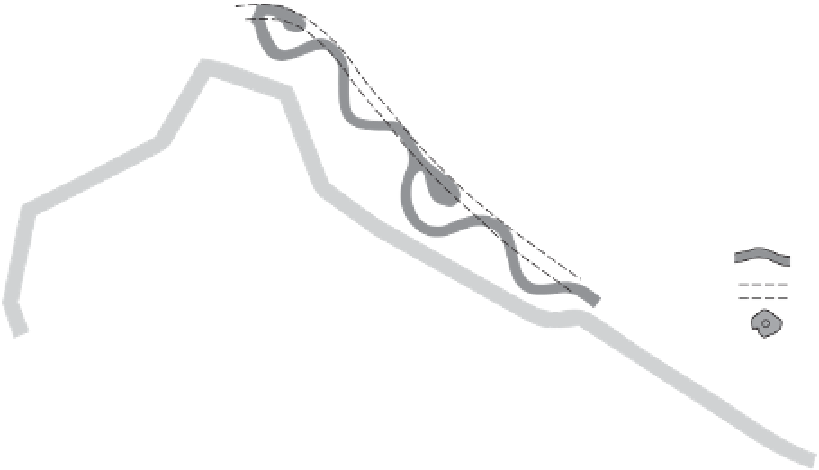Environmental Engineering Reference
In-Depth Information
90 km of Zürich's streams were culverted during the
last 100 years or so, but since a federal law was intro-
duced in 1991 imposing the separation of clean water
from combined sewer systems, engineers have restored
over 14.5 km of surface streams in this city alone
(Pinkham 2000 ).
In essence, the factors limiting natural function of
the river ecosystem need to be identifi ed and then the
system restored in a manner that will move it away
from the current degraded state and past the control-
ling biotic and abiotic
thresholds
(
sensu
Hobbs &
Harris 2001, and see discussion in Mainstone &
Holmes 2010). Only by surpassing the thresholds is it
possible for the ecological
conditions
to improve
(Hobbs & Harris 2001). It is also important to recog-
nize that whilst complex, river restoration has to be
adaptive
and aim towards
resilience
of the system in
light of the anticipated changes to local climate condi-
tions (Harris
et al
. 2006) - it is not simply a matter of
restoring a facsimile of what was there before.
cate conservation of sites that are under pressure from
development and associated pollution; see especially
the EU Habitats Directive 92/43/EEC (EC 1992a) and
the more recent Water Framework Directive (WFD)
2000/60/EC (EC 2000). The WFD requires a more
holistic approach
by considering the interconnected ele-
ments that constitute an aquatic ecosystem and deter-
mine its ecological status and health (see Chave 2001).
Nonetheless, each country has inevitably started from
a different point, depending on the historical use of
its rivers, with issues ranging from water quality to
inappropriately engineered rivers. Luxembourg, for
example, has only inland rivers and thus waste water
(water quality) is the main problem; Ireland has spent
over
€
15 million on fi sheries restoration measures (see
O ' Grady 2001 ; see also Figure 17.2 ); and southern
Spain's main concern is improving in-stream fl ows
where intensive water extraction for irrigation has
caused severe degradation (Cachón de Mesa 2001).
Furthermore, any restoration must be appropriate to
the specifi c landscape and the historical heritage. In
the United Kingdom, the government document Plan-
ning Policy Guidance 25 (PPG25 2001), revised to
Planning Policy Statement 25 in March 2010, states
that planners should make the most of the benefi ts of
green infrastructure for fl ood storage and conveyance,
re - create
17.4.1 Economic and legislative
justifi cation of restoration
Various EU directives now in place are aimed at imple-
menting measures at the continental level that advo-
functional
fl oodplains and set back fl ood
S4
N
S3
0
100 m
Existing
weir
S2
new meanders
original course
willows
S1
Footbridge
Land fill
Figure 17.2
Diagram of re-meandered section of a previously straightened river.
















